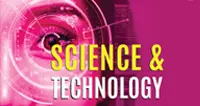Scientists Build DNA Nanoantenna
Recently, a team of researchers developed the world’s tiniest nanoantenna made of Deoxyribonucleic acid (DNA) and polyethylene glycol (PEG) to study changes in the structure of protein molecules.
Key Highlights
- Process: A fluorescent molecule is first attached to the DNA, and then this fluorescent nanoantenna is attached to a biological nanomachine, such as an enzyme.
- Function: The nanoantenna works like a two-way radio that can both receive and transmit radio waves.
- It receives light in one wavelength, and depending on the protein changes it senses, it transmits light in another colour and this can be detected and studied.
- Viable Alternative: These fluorescent ....
Do You Want to Read More?
Subscribe Now
Take Annual Subscription and get the following Advantage
The annual members of the Civil Services Chronicle can read the monthly content of the magazine as well as the Chronicle magazine archives.
Readers can study all the material before the last six months of the Civil Services Chronicle monthly issue in the form of Chronicle magazine archives.
Related Content
- 1 India and the US to Co-Produce Sonobuoys
- 2 SANJAY Battlefield Surveillance System
- 3 Indian Navy Commissions Three Indigenously Built Warships
- 4 Hypersonic Technology with Scramjet Ground Test
- 5 DeepSeek AI Models
- 6 ISRO Successfully Grows Cowpea Seeds in Space
- 7 India’s First Private Satellite Constellation Launched
- 8 Digantara’s SCOT Mission
- 9 ISRO Achieves Historic 100th Launch
- 10 Kisan Kavach Suit


